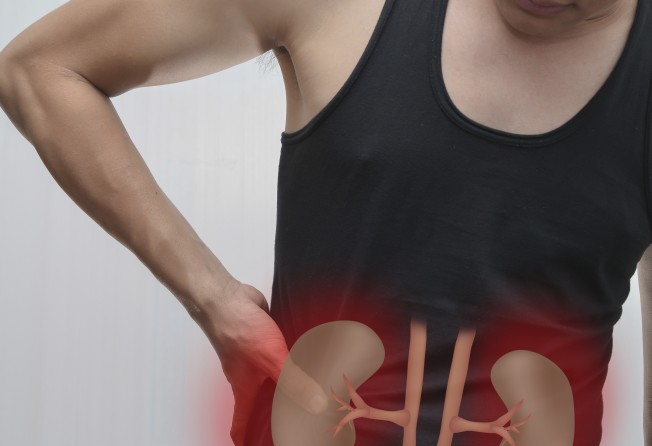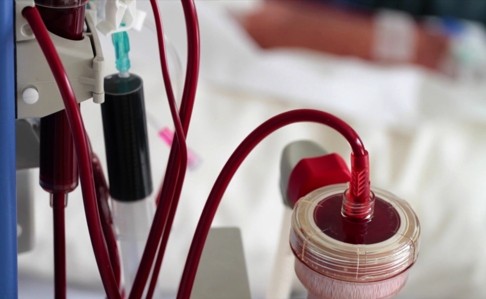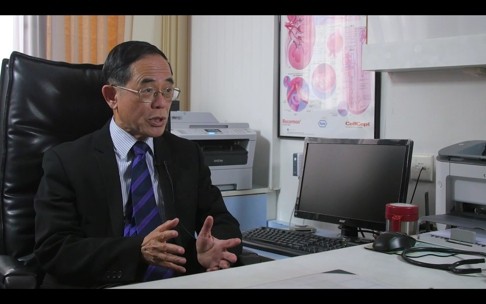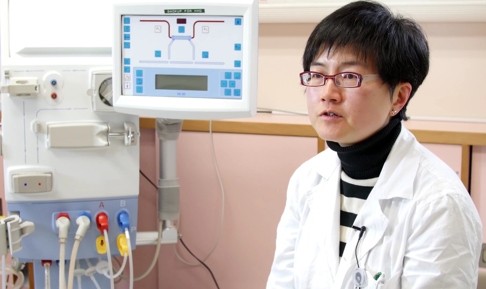Silent killer: Hong Kong warning on rising cases of chronic kidney disease
The condition may present no symptoms in its earlier stages, but left untreated can lead to cardiovascular disease and early death. As many as one in five Hongkongers could be affected

One moment he was a healthy thirty-something, the next he was a chronic kidney disease patient. Having not experienced symptoms and lacking a family history of the condition, the doctor’s diagnosis shocked and surprised Mr Lam.
Two decades later Lam, now 57, is at the fifth and final stage of chronic kidney disease, otherwise known as end-stage renal disease or kidney failure. Since his kidneys can no longer do their job, he relies on peritoneal dialysis to remove toxins and excess water from his blood.
Through a soft plastic tube surgically placed in his belly, a sterile cleansing fluid enters the abdomen, filters the blood, and is then drained through the tube. The process is repeated every few hours.
“I was diagnosed in 1995. Back then I bought health insurance and was asked by the provider to go for a check-up. At the check-up I was told my urine contained proteinuria. At another check-up with a different doctor, I was diagnosed with chronic kidney disease,” says Lam.
“You don’t know when you have kidney disease. You feel like a normal person. Even if you have it, you don’t know. It’s not like a cold, where you feel fine yesterday then today you’re suddenly sneezing. That’s obvious, but kidney disease isn’t obvious.”

Chronic kidney disease is a serious illness in which damaged kidneys cannot filter blood as well as healthy kidneys, and this problem persists for more than three months. Symptoms may include tiredness, loss of appetite, nausea and vomiting, swelling around the eyes and ankles, bubbling urine, persistent itching, shortness of breath, trouble sleeping, muscle cramping, and the need to urinate more often especially at night.

“If you ask me what’s the percentage of chronic kidney disease in Hong Kong, it would be something like 15-20 per cent. We don’t know for sure,” says Ho.

Undiagnosed, the condition can lead to life-threatening long-term effects, mainly cardiovascular disease like heart disease and stroke. Without changes in lifestyle or medication, patients may eventually develop kidney failure and need renal replacement therapy (RRT) in the form of dialysis or a kidney transplant.
Hong Kong, like many parts of the world, is seeing a gradual but significant increase in prevalent cases of RRT. In 2013, there were 8,510 patients in the Hospital Authority’s Renal Registry requiring RRT, more than 2½ times the 3,312 patients in 1996, according to a study by researchers at Prince of Wales Hospital published in 2015 in the International Society of Nephrology journal Kidney International Supplements.
The Registry saw 1,147 new patients in 2013 (compared to 615 in 1996), which translates to an incidence rate of RRT patients of 159 per million population. The median age was 59.1 years with male to female ratio of 1.54 to 1.

“Chronic kidney disease is frequently associated with several other major non-communicable diseases such as hypertension, diabetes and obesity,” says Dr Angela Wang of Hong Kong University’s Department of Medicine.
In fact, hypertension and diabetes are the most common causes of kidney disease. Other less common conditions include inflammation (glomerulonephritis) or infections (pyelonephritis). Sometimes chronic kidney disease is inherited (such as polycystic disease) or the result of longstanding blockage to the urinary system (such as enlarged prostate or kidney stones).
In 1996, 26.2 per cent of new patients entering RRT was due to diabetes, and this rose to 49.6 per cent in 2013. With rising incidence of diabetes, hypertension and obesity, experts predict the prevalence of chronic kidney disease to increase by 17 per cent over the next decade. The condition is now recognised by the World Health Organisation and other organisations as a global public health issue.
Each roughly the size of your fist, your two kidneys are located deep in the abdomen, beneath the rib cage. Their main job is to remove toxins and excess water from the blood, but they also help to control blood pressure, produce red blood cells and keep your bones healthy. They also control blood stream levels of many minerals and molecules including sodium and potassium, and help to control blood acidity. Every day your kidneys carefully control the salt and water in your body so that your blood pressure remains the same.
Each kidney has about a million tiny filters called nephrons. If nephrons are damaged, they stop working. For a while, healthy nephrons can take on the extra work. But if the damage continues, more and more nephrons shut down. After a certain point, the nephrons that are left cannot filter your blood well enough to keep you healthy – this is kidney failure.
The middle-aged general public about 30-40 years old need to start going for body check-ups, because kidney disease is a silent killer
Chronic kidney disease can occur at any age, but becomes more common with increasing age and is more common in women. After the age of 40, kidney filtration begins to fall by approximately 1 per cent per year.
Increasing awareness of the disease is key to early detection, experts agree. Managed appropriately, the deterioration in kidney function can be slowed or even stopped, and the risk of associated cardiovascular complications can be reduced.
Ahead of World Kidney Day on March 10, Hong Kong marked the annual campaign on Sunday, March 6 with a public education event at the Kowloon Bay International Trade & Exhibition Centre. This year’s theme is Kidney Disease & Children: Act Early to Prevent It, says Dr Andrew Choi Koon-shing, chairman of the Hong Kong Society of Nephrology.
Some children are born with kidney disease and others develop it when still very young. The leading causes of kidney failure in children are hereditary conditions, often lacking obvious symptoms. Additionally, kidney disease that becomes evident in adulthood may occur more often in persons with risk factors that can be detected in childhood.
Dr Julie Ingelfinger, professor of paediatrics at Harvard Medical School and senior consultant in paediatric nephrology at MassGeneral Hospital for Children, emphasises the importance of chronic kidney disease awareness and prevention from an early age.
“It is important to be aware of and to detect paediatric kidney disease. Kidney disease can be treated, even in our smallest patients,” says Ingelfinger. “Further, because much of adult kidney disease has its roots in childhood, it is critical to focus on infancy and childhood if we are to prevent and cure kidney disease.”
If he could turn back time, Mr Lam wishes he had learned about kidney disease and was more aware of his diet before being diagnosed. “The middle-aged general public about 30-40 years old need to start going for body check-ups,” he says, “because kidney disease is a silent killer.”